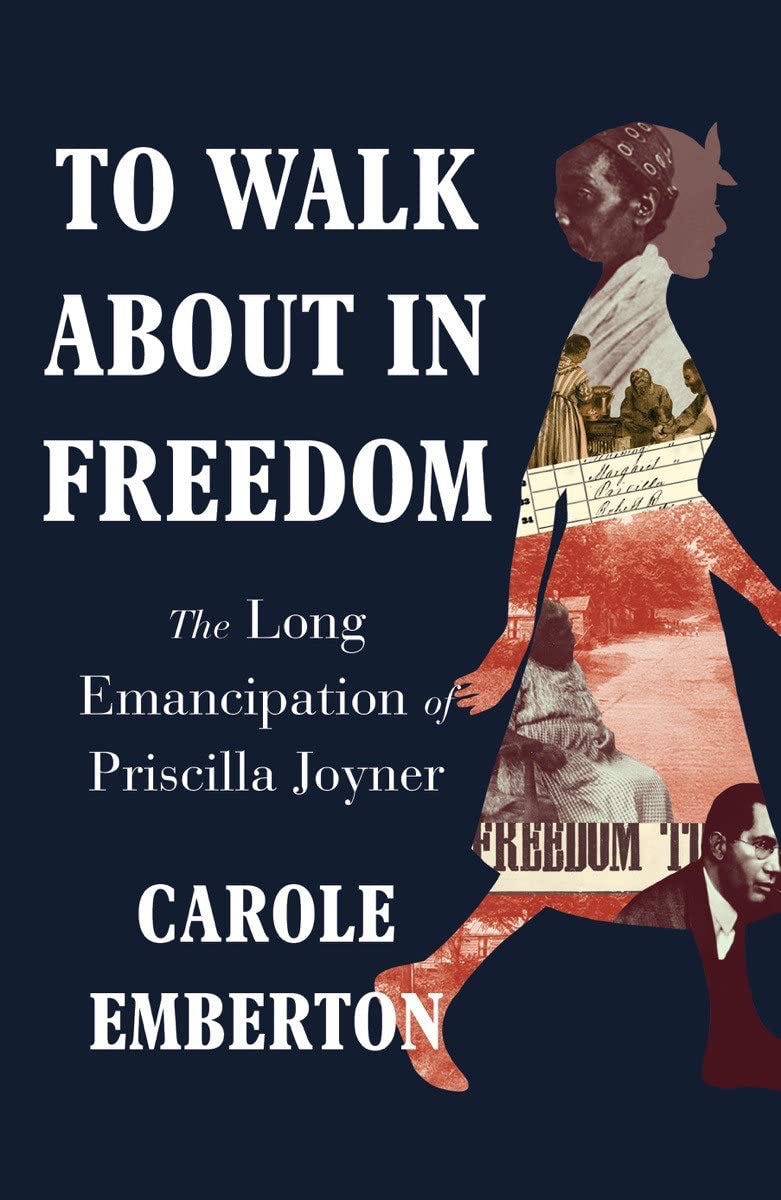Measuring Freedom During Reconstruction
First things first. Go out and pick up a copy of Carole Emberton’s new book, To Walk About in Freedom: The Long Emancipation of Priscilla Joyner. I’ve been looking forward to its publication for some time. It arrived on Tuesday and I am just about finished reading it.
Emberton uses the story of Priscilla Joyner to explore a much broader story of how African Americans experienced the transition from slavery to freedom. Joyner’s life is pieced together almost entirely through an interview she gave with the Federal Writer’ Project (FWP) in the 1930s. This reliance on a small number of primary sources will remind some of you of Caleb McDaniel’s Pulitzer-Prize winning book, Sweet Taste of Liberty: The True Story of Slavery and Restitution in America.
Emberton does a masterful job of reconstructing Joyner’s life by acknowledging what the evidence allows her to conclude and where speculation must suffice. Silences abound in the historical record. In these spaces, Emberton helps to round out Joyner’s life by exploring the experiences of other individuals, who faced similar challenges.
The book is ultimately a meditation on the importance of the imagination as a tool in the shaping of a historical narrative. The close reading of the available historical sources, in addition to the author’s speculations and use of other narratives from the FWP, invests the reader in Priscilla Joyner’s emotional life.
It is the emotional world that Emberton is ultimately looking to capture in this book. Consider the following paragraph that appears in the chapter on Reconstruction:
But for others, happiness remained a more intangible goal than fair labor contracts or testifying in court. The sullen expectations white people placed upon freedpeople’s emotional as well as physical lives often stunted their ability to reimagine the world and their place within it. So many of Reconstruction’s battles took place in the realm of the imagination and involved the deployment of emotional weapons like rage, sympathy, grief, and love. And happiness. Happiness was unpredictable. It might come in great waves, like when a mother found the child who had been sold away from her decades before. Other times it trickled down in small drops—a new dress, a wagon ride into town, sleeping under the same roof as your spouse. These were the moments by which a person measured their freedom. (p. 54)
All too often we frame the story of the end of slavery and transition to freedom as something that happened to African Americans rather than something that was experienced. The emphasis is placed on constitutional amendments, the scale of violence in the postwar South, and the importance of Black participation in the body politic. Of course, all of these are important to understanding this period in American history, but alone they can’t tell us much of anything about how individuals maneuvered through and experienced this new world.
Thanks to Carole Emberton we now have some sense of how one individual did so. I hope this gives you some sense of just how much I’ve enjoyed reading this book.
Finally, Otis would like to remind you that if you subscribe to this newsletter your name will be entered into a drawing to win one of two copies of my book, Searching for Black Confederates: The Civil War’s Most Persistent Myth. Winners will be announced on Friday, March 18.
Good luck and have a great weekend.




I like your distinction between something that happened to and something that was experienced.
Otis is adorable!